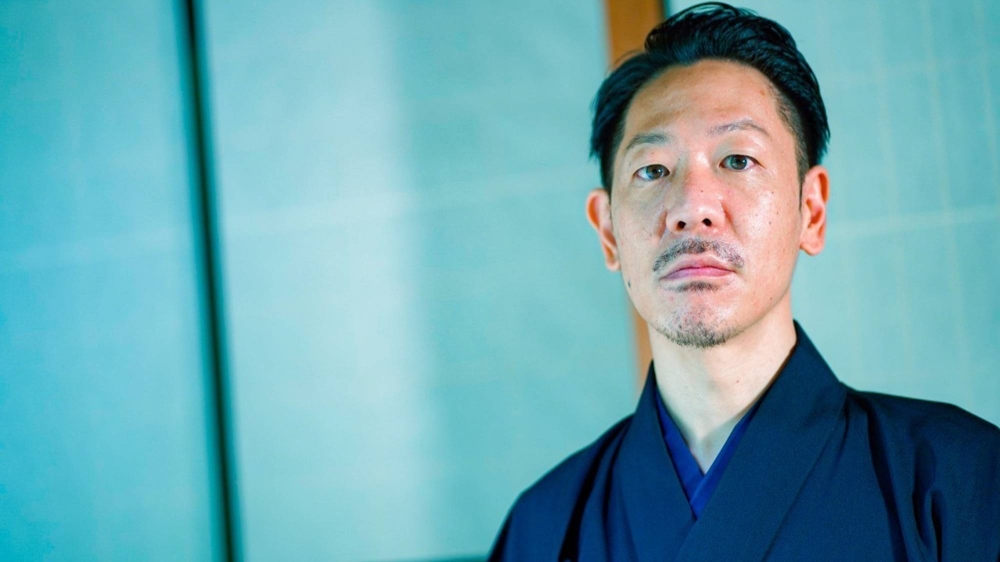The Ueda Soko Ryu tea ceremony school has been operated in Hiroshima for over 400 years. Its founder was highly respected warrior and artist Ueda Soko (1563-1650), who studied directly under famed tea masters Sen no Rikyu and Furuta Oribe, and was a favored tea practitioner among both the Tokugawa and Toyotomi lords. Presently in line to become the 17th-generation Iemoto (grandmaster) is Soko Ueda, 45, (spelled with different kanji), a former hip-hop dancer who returned to his family’s business at the Wafudo tea house in Hiroshima.
1. What makes the Ueda Soko Ryu tea ceremony different from others? Its style is buke sadō (“samurai tea ceremony”), and it differs from other methods in its use of utensils and clothing. As with other schools, it also focuses on meditation — with garden stepping stones encouraging people to walk slowly and mindfully, and the use of candles and low lighting to re-create a mystical atmosphere that evokes a feeling of ancient times.
2. What kind of person was your ancestor, Ueda Soko? Cha no yu (tea ceremony) was immensely popular during the Momoyama Period (1573-1603) and into the Edo Period (1603-1868). The cultural and political strategies of the time included demonstrating the level of one’s ceremonial tools, and Ueda Soko’s were renowned for their superiority. He was also a talented garden designer, and was granted his own Noh performance stage at an early age, which only prestigious and authoritative warriors were permitted to possess at their residence.

